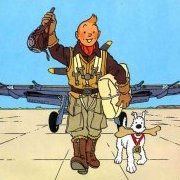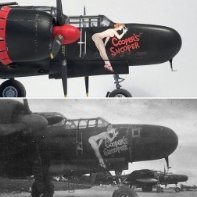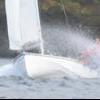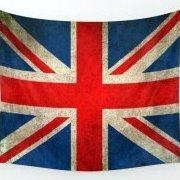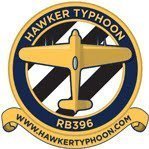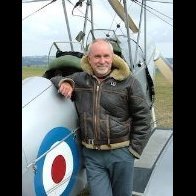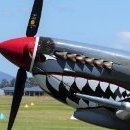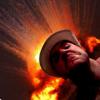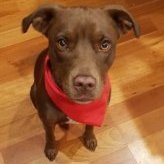Search the Community
Showing results for tags 'faa'.
-
OrHi all, I have a 1/72 Hasegawa Corsair F4U in the stash and would like to present it as an aircraft I know a relative to have flown (1830 NAS aboard HMS Illustrious). I've seen a number of aftermarket decals but while period correct, none of them are from the squadron or even ship. Does anyone have any tips on how to recreate a specific aircraft without it costing a fortune? I don't have the skills to be airbrushing stencils or creating my own decal sets. As an aside, when did the FAA move from the red and blue roundels to the blue and white SEAC? There is a specific date when he shot down a Zero so I'd like to be spot on with it
- 10 replies
-
Couple of models I have just managed to finish up. The Korea pair should have been completed as part of the "Here comes the Fleet Air Arm" Group Build but unfortunately I became unwell and was unable to finish them until now. Not quite up to my usual standard but I am hoping to get back there. Anyway - here we go.. First up Supermarine Seafire 47 VP480/180P 800 NAS, 13th CAG, HMS Triumph. Korea Aug 1950 13.08.50 Armed Reconnaissance Chinnampo Harbour Korea. Flown by Lt RA "Dick" Peters. Airfix 1/48. Barracuda replacement bonnet. Airscale instrument decals. Colour Coats Enamel paint. OOB Decals. Next For six decades, the credit for the first jet kill by a piston engine fighter in Korea had gone to Lt Peter “Hoagy” Carmichael. This was accepted fact however, recent research has proven beyond doubt the actual pilot who bagged the Mig-15 was another pilot in Carmichaels Flight, Sub Lieutenant Brian “Smoo” Ellis. Ellis has now been given official recognition for his amazing feat of airmanship. Hawker Sea Fury FB.11. WJ223/O106 802 NAS, HMS Ocean. Korea 09.08.1952. Mig-15 Destroyed SLt Brian "Smoo" Ellis. Airfix 1/48. Barracuda cowling & engine. Eduard interior and exterior detail sets. Paint:- Colourcoats enamel Markings:- Fundekals Did go quite as hoped. Fitters need to do a bit more cleaning on the airframe Last up Eastern Built Wildcat V JV384 6*F 882 NAS, HMS Searcher Operation Hoops May-1944 06.05.44 0820 2x BV138 Shared Destroyed with JV538/7*X(?). Off Vevang Norway. S/Lt John Arthur Cotching Cotching was killed two days later whilst attacking flak ships defending a convoy. He had previously served in Orange Section, ‘A’ Flight, 806 NAS HMS Indomitable Operation Pedestal Aug-1942 12.08.40 S.79 Destroyed, Re.2001 Destroyed. Grumman Martlet MkII AM968/8M. Kit:- Hobby Boss FM-1 1/48 Paint:- Colourcoates Enamels Markings:- Mix of what I had available. Thanks for stopping by..
- 12 replies
-
- 46
-

-

-
I seem to be late to the opening threads. I have been doing some deliberating over what to build (built a Fulmar and Sea Hurricane already this year so it was down to a Corsair, Seafire III or Hellcat) and where I do have a Wildcat MkV in progress but very much under 20% complete, I am not going to build that as part of this GB. Instead I am going to move away from my usual WWII fare and I am going to build two aircraft from the Korean war. Two in parallel is a bit of a stretch for me so we'll see how it goes. The first aircraft I will be building is:- Its the Airfix 1/48 Sea Fury FB11. I have some etch and some after market for it, so we'll see how that goes. This will be completed as Hawker Sea Fury FB11 WJ223/O106, 802 NAS HMS Ocean. Korea - Jun '52. The aircraft that SLt B "Smoo" Ellis has now been credited with destroying a Mig 15. I have the Fundekals set for this aircraft - so I'll be using them. The second aircraft for this GB will be this rather elderly:- Airfix 1/48 Seafire FR47. Again with a little bit of aftermarket (new prop blades are on their way). This will be completed as an aircraft assigned to 800 NAS, 13th CAG, HMS Triumph, Jun - Sep 1950. I need to research a specific Aircraft / sortie / pilot for this model (or just use the box markings). I know they often carried RPs on Armed reconnaissance sorties and am thinking aux tanks and RPs with RATOG rockets but am unsure about the Tank/RP combination. Any ideas? I will carry on with the WIldcat and await the order to start engines..
- 32 replies
-
- 13
-

-
Grumman Hellcats in FAA service - when did they turn Blue? Hi all, I want to use to the collective brain to try and resolve a little dilemma for me. On the theme of Fleet Air Arm Aces I intend building a few more Hellcats representing aircraft of 5th Navy Fighter Wing Pilots (1839 & 1844 NAS) and I have hit a bit of a dilemma. I have as WIP at the moment a MkI and an MkI of the FN999 and JW999 Serial range but I intend to build a couple more:- Hellcat II JX814/W132 - ‘Tony’ destroyed, ‘Oscar’ destroyed 12.04.45 SLt WMC Foster. Hellcat II JX886/W126 - ‘Judy’ Shared destroyed 06.04.45 SLt TE Wilson. Both of these victories were during Op Iceberg April ‘45. JX814 & JX886 were both allocated in 03.45. My question is, should these aircraft be in TSS or GSB? I have not seen any photos of either JX814 or JX886 but the common view is (and repeated in artwork in Andrew Thomas’ Royal Navy Aces of WW2) that if they are Iceberg aircraft they are in TSS but should this be the case? I have a still from a film taken on HMS Formidable showing the Corsairs being serviced, in the background is Hellcat X119 that is identified by Sturtivant as JX772 the aircraft flown by SLt Atkinson to destroy three ‘Grace’ bombers on 25.07.45 (also written into Atkinson’s log book). The aircraft being allocated to 1839 NAS 06.45 and reallocated to 1844 NAS 07.45 - it is painted Dark Blue. If JX814 and JX886 have a higher s/n that JX772 should they not also be in GSB or was JX772 built out of sequence or repainted? (or is my my sequential build assumption wrong?).. If it helps I think JX814 and JX886 are in the BuAer Group 71638-77112 and JX772 in group 71163-71237 but my maths might have failed me.. Hope someone can help or I will just go with TSS which seems to be the scheme at the time.. Thanks in advance..
-
Here's something from the First Generation of the jet age, the Supermarine Attacker, F.1. It was also the first jet supplied to the FAA in the early 1950s. As the wiki page says, like many 1st Gen aircraft it didn't last long. The 2nd generation was quick in taking its place. Still, there it was. I have had this kit for a few years and it looks like it's time to move it off the shelf and onto the bench. Bogart Box art...older AZ Model art and it's an older, short-run kit. The sprue looks basic. As I recall this grey plastic can be a bit soft when it comes to details. I'll see how it all fits. I'm given two canopies and an under-fuselage fuel tank for an F.2 conversion if I want, but I am sticking with the F.1. Also included is a resin seat. Decals look good and in register... And the profile is typically shark-like with its dark grey/sky configuration. I'll get into this presently. --John
- 32 replies
-
- 9
-

-
- supermarine attacker
- FAA
-
(and 1 more)
Tagged with:
-
Continuing my jet odyssey, but in an earlier era in naval jet aviation than the A-7E, a FAA Hawker Sea Hawk. This one, to be specific. I’m going to try to replicate it exactly (as near as I can) as it appears in this photo, damaged fuel tank included. I may change that slightly and fold the wings, but that’ll be a decision for later. I will be using the Trumpeter 48th scale kit with the Eduard PE and Jaguar resin wings (which actually don’t seem much of an improvement over the kit parts). I’ve made a start. The cockpit PE is self adhesive which is novel, for me, and quite easy to use. What you see below is an evening’s work. I base painted, attached the PE and sealed with a clear coat. I’ve also added a grime wash. Interestingly, the “black” on the PE really isn’t black at all, more of a midnight blue. The instrument panel in particular lightened under the clear coat. Next will be a dry brush, some clear gloss into the instrumentation and a little bit of detail painting before I’ll call the cockpit done. Cheers.
- 75 replies
-
- 25
-

-
- Trumpeter 1/48
- Hawker Sea Hawk
-
(and 1 more)
Tagged with:
-
Well, my parcel from Poland arrived on Wednesday, it took a wee bit longer than previous parcels from Arma Hobby, but considering the postal situation at the moment it was still reasonably quick, only 12 days. The sturdy card box contained one Expert Set FM-2 Wildcat and 3 sets of Overtrees neatly wrapped in bubble wrap, I've got a few sets of decals for Martlet/Wildcat VI's, so there's a fewe schemes for me to choose from. Wednesday afternoon the Expert Set was unboxed and had a good fondling whilst I perused a selection of references. Box and contents:- The overtrees supplied are just the two grey sprues and the clear sprue, nothing else. The kit comprises of a main sprue for the FM-2 / Wildcat VI release:- Plus a common sprue for this and the forthcoming F4F-4 release:- The clear sprue is also common with the F4F-4 release, as it contains the lower fuselage windows and wing landing light cover not used on this FM-2 / Wildcat VI release. Also shown here are the small etch sheet and the masking sheet for the canopy and wheels which are only included in the Expert Set:- And here's the decal sheet from the Expert Set which covers 5 US FM-2's, and 3 FAA Wildcat VI's, all of 882 NAS on HMS Searcher, 3 individual code/serials being supplied for the same basic scheme:- If you want to see photo's better than my phone snaps above, there's more on the Arma Hobby website, unfortunately the links they provide on this page for the instructions don't seem to work for me. Initial impressions? It looks like a top quality product, with pretty much all you'd need to build a well detailed model straight out of the box.
- 33 replies
-
- 13
-

-

-
Don't know about you mates, but this lockdown unleashed the inner beast in me For this build I took inspiration from the the wonderful Attacker build presented by @Navy Bird here: All issues described were present in my kit as well, except for the misalignment of the fuselage halves. I have added the boundary layer plates, reshaped and boxed the tailhook compartment (albeit a bit deeper then needed) and the tailwheel well too. Added the aerials, scratchbuilt a new tailhook. I regret not opening the canopy as the fit of the closed one was awful. I like the "pregnant" look with the belly tank and added this too. However, after the long and painful process of glueing, trimming and fitting the tank in place and filling the ever-present large gaps, the plane still retained his elegant lines and that puzzled me . When comparing with the photos in the Richard Franks' book it seems to me that the tank AZ offers us in the kit is the one from the prototype that differs from production ones by being shorter and slimmer (photo on p. 13 for the lucky ones to have his book on the subject). I never knew that there were two types of external tanks for the Attacker (different capacity, probably?). Modified the landing gear a bit by adding scissor links and some missing rods I tried to keep her clean as the photos show that the fleet was well maintained. Oh, BTW, managed to pull the paint off twice while removing the masks... 😠 Hope you will enjoy it! Stay safe!
- 10 replies
-
- 38
-

-
Kit - Eduard (Weekend Edition) Paint - All acrylics Decals - Freightdog Extras - Eduard kit-specific Zoom set. Grumman Hellcat II 800 NAS Trincomalee, Sri Lanka (Ceylon) Autumn 1945. Built this at the same time as the Hurricane I posted here a few weeks ago but only got around to finishing it this morning. Fairly straightforward build, could have done without the separate fin-tip antenna post which was instantly gobbled-up by the carpet monster but that may have been down to 'user error'. Paint is all Tamiya acrylics, as usual mixed by eye. Not too much else to say, very relaxing and rejuvenating project, now ready for something more challenging. Please feel free to comment, question or criticise. Cheers from NZ. Ian.
-
OK. I went though the threads and I figured I will build the Sea Vixen, having never built one before. A Sea Venom, yes, but not this. I also have a Sea Tempest, SeaFire, Phantom, etc...But this one caught my eye. I actually have the Revell reboxing too, but I like the options of building one of the birds off of the Hermes and, well, @Enzo the Magnificent is building the Revell kit...anyway...This kit does give me an option for the Hermes, two for the Eagle and three from Yeovilton. I'll take the Hermes. Sprue in bags... A lot of options... The profile (For now. I might change my mind.) Now that I have a clean bench, I will take a day to gather my thoughts. --John
- 52 replies
-
- 8
-

-
- Sea Vixen
- 1/72nd scale jets
-
(and 1 more)
Tagged with:
-
This is the 3rd scheme (C) offered by the new Airfix 1:48 Hawker Hunter release. In this case it is the GA.11 , Royal Naval Air Station Yeovilton, Somerset, England, 1976. I always love doing the Fleet Air Arm scheme and it looks striking on this aircaft!
- 14 replies
-
- 58
-

-

-
- Airfix
- Hawker Hunter
-
(and 1 more)
Tagged with:
-
Hi all I finished this one last week, this is the Revell 72nd kit built OOB apart from the Pitot tube which was replaced wing Albion Alloys slide fit tubing and ghe Seatbelts which were made from Tamiya masking tape folded over to make it double thickness. Brush painted with Colourcoats and Humbrol enamels and weathered with a dot filter and panel line wash using oik paint before some chipping and exhaust stains applied. I won't add a link to the WIP as it is a multi build thread and is 80 odd pages long, so is quite daunting. Enough of the waffle, here's the pics Pretty pleased with this one, just have a 32nd kit to doo in TSS one day soon. Thanks for looking in and thanks to those who followed along offering support and encouragement, it is always very much appreciated. Chris
- 24 replies
-
- 42
-

-
This is a conversion of the Hasegawa Hawker Hurricane MkIIb boxing to represent Hawker Sea Hurricane Mk.IIb JS355 800 NAS. HMS Biter Operation Torch, Nov ‘42 Lt Cdr JM Bruen This is the last aircraft Bruen scored an air to air victory in. I should do a family shot as I have built an aircraft, flown by Bruen of each type he scored in Skua, Fulmar, Sea Hurricane I and Sea Hurricane IIb. Kit: 1/48 Hasegawa Hurricane IIB Work done:- · Removed Lower kit fuselage and in its place grafted in the lower fuselage of the Airfix 1/48 Sea Hurricane I kit which was adapted to fit. · Fixed the curvature of lower fuselage walls which was missing from the Hasegawa kit. · Reshaped the top of the engine cowling to better represent the rounded top of the Hurricane nose. · Sanded the wing tips to the triangular cross section. · All control surfaces removed, reshaped where necessary and refitted slightly animated. · Various lumps and bumps removed from the cowling to better represent the Hurricane IIb. · Pilot harness from paper. · Paint is Sovereign Hobbies Colourcoats enamels. · Nationality Markings are sprayed using homemade masks. Serial number is homemade decal. Stencils are kit decals. Big call out of thanks to @Troy Smith for his help and advice. The Hurricane Guru. I hope I got it about right (though I need to sort out that prop blade tip). The stencils have silvered which is a shame as I thought the surface was smooth enough but note to self to do it better next time. Lastly the aircraft of its display base. Anyway, thanks for stopping by. I need to go figure what I am going to build in the Fleet Air Arm Group build now...
-
Royal Navy SKYRAIDER WV106 has been languishing outside the Cobham Hall at the Fleet Air Arm Museum Yeovilton for many years and although it's condition is slowly deteriorating I thought it might make a good subject for my first diorama. Not sure if this topic should be in "Aircraft" or "Dioramas" but it feels more of an aircraft build with some surrounding environment. I hope it's acceptable? The photograph below shows the sad state the airframe was in about twelve years ago. I suspect it's a lot worse now? Although not visible in this shot, the engine is lying alongside on a pallet. I think the AMT/ERTL/ESCI kit is the only one available of an AD-4W in 1/48 scale and I've had an example in the stash for a number of years. It's not great but considering what I intended to do with it, it's quality probably doesn't matter. The first thing to do was to add some interior fuselage detail as the access doors had been removed giving a clear view inside. The MINIMALI packing case is a little artistic licence but seemed appropriate as many of the removed components were scattered around the site in various containers. I removed the fuselage forward of the engine bay rear bulkhead and scratch built a firewall and associated bits and pieces. The wings were cropped and I've since added AIRWAVES brass etched internal ribs etc. Next step is to add more detail to the bulkhead and the severed wings before getting some heavily weathered paintwork started.
- 62 replies
-
- 30
-

-

-
Hello everyone, Here is my latest finish from a while ago (but only just took some pictures), of an Eduard Hellcat Mk II in the colours of 1844 Sqn FAA on HMS Indomitable. I got a Silhouette stencil cutter for Christmas so I couldn't resist and used it to mark out and paint all the markings on it. Although the 4" 'Royal Navy' and serial numbers were too small for the machine so I used the decal resulting in a bit of silvering. Other than that, it went great. Painted with Humbrol enamels. Weathered with Tamiya weathering kit, silver pencil, Vallejo pigments and panel wash. Average photos taken with my phone. Thanks for looking.
-
Having recently finished a Tamiya Wildcat I started to search through my stash (or the NARNIA CUPBOARD as my wife calls it) to find my next project. I spotted the old issue Airfix Buccaneer I've had for some time. I've made no secret elsewhere on this forum of my disappointment at the cost of the soon to be released new version so thought I should put my money where my mouth is and actually build the one I have in stock. I must admit that some of the mouldings look a bit rough around the edges but they certainly give the appearance of what could become a model of one of my favourite aircraft. I hope to carry out most of the build form the box but decided to replace the original wheels with a resin set from ARMORY. Just getting underway now, so will add to this as things progress. Ian
- 27 replies
-
- 12
-

-
My first completion of the Year (started last year). Subject:- Grumman Avenger MkIIJZ186/Q*4P. 854 NAS HMS Illustrious. Operation Meridian II Jan-1945. On 29 January, Operation Meridian II, an air strike against the oil refinery at Soengei Gerong, Sumatra, was undertaken. Having dropped their bombs on the target the Avengers escaped at low level. On escape they were attacked by the defending fighters. The squadron CO was attacked by Japanese fighters, following behind Lt GJ Connolly fired his forward firing machine guns destroying one Ki-44 'Tojo' and damaging another. Lt GJ Connolly (pilot), Lt RE Jess (Observer), Unknown (TAG). Model:- Hobby Boss Fleet Air Arm Avenger MkI/II. 1/48. Observers cockpit is scratch built (inc seats and panels). Pilots cockpit detailed out. Lower cabin is detailed (torch, and magnifier is required). Scratched up some machine gun barrels. Extra bombs provided. Wing fold mechanism scratch built. Observers domed windows crash moulded (best not really studied). Paint - Xtracrylics. Markings - Various Generic. Some photos Its not medal winning - but I hope you like it. Thanks for stopping by:-
-
I'm currently at the painting process of Special Hobby Blackburn Roc Mk.I in 1/48 and the manual suggests Extra Dark Sea Grey, Dark Slate Gray and Sky Grey. First of all, is the color scheme well suggested by SH? And second is Gunze dilemma... Wandering through the internet, I came up with the following equivalent: Extra Dark Sea Gray=Mr.Color 333 Dark Slate Grey=H421 Sea Gray=Mr.Color 325 Do you agree with the suggested Gunze colors? If you think they are not adequate, I would ask for your corrections and suggestions. Forgive me if this topic has been elaborated, but I am not sure that I have found a definitive solution (to a satisfactory extent).
- 33 replies
-
- FAA GUNZE
- FAA COLORS
-
(and 1 more)
Tagged with:
-
Hi All, My second completion of 2023 is Special Hobby's Blackburn Roc Mk.I, completed as L3114 of 759 Sqn FAA based at RNAS Donibristle in November 1939. Here's a photo of the aircraft in the foreground: I couldn't resist this scheme, if only for the non-standard yellow surround to the fuselage roundel! The kit was built mostly OOB, albeit with home-cut stencils for the national markings. As with all SH kits there's a few foibles, mainly around the assembly of the wings (which have a split to permit folding. A brief summary of 'improvements' as below: - Added reinforcing tabs to the wing roots making for a stronger junction - Added formation lights to the wing tips using clear sprue - Boxed in the landing light positions and added lamps from clear sprue - Rivetted the whole airframe - Trimmed undercarriage legs and doors to allow positioning in the correct 'vertical' position Here's the WIP if anybody is interested (source of many Roc puns - be warned 🤣😞 Anyway, on with the photos: Here's a couple with the Skua I built last year: The family resemblance is strong! Here's a final shot to prove @Dandie Dinmont's assertion that the Roc makes that other notorious turret fighter, the Boulton Paul Defiant, look like a sleek beauty: I'd say you are 100% correct Craig! Although it is no beauty, I have really enjoyed learning more about this most unusual aircraft, and it's nice to have this footnote in naval aviation in the collection. Thanks to everybody who offered kind words and encouragement throughout the build - it was much needed and was much appreciated! Thanks for looking, Roger
- 27 replies
-
- 55
-

-

-
- Special Hobby
- FAA
-
(and 1 more)
Tagged with:
-
Hi All, My first start for 2023 will be Special Hobby's Blackburn Roc. Here's the box art: Here's the sprue shots: You can see that the propeller is missing a blade (in the box, fortunately!) There's a bunch of resin (undercarriage bays, engine, turret base, bomb racks): There's a nice unpainted PE fret: And the decals (which I won't be using): The kit allows for 4 schemes - I'll be building the box scheme L3114, which is an aircraft of 759 Sqn FAA, based at RNAS Donibristle in November 1939: Here is a photo with L3119 in the foreground: I rather like this unusual scheme, with the low TSS demarcation and the non-standard fuselage roundels. I built SH's Skua this time last year, so I know roughly what to expect. Here we go again! Thanks for looking, Roger
- 101 replies
-
- 17
-

-
- Special Hobby
- FAA
-
(and 1 more)
Tagged with:
-
Hi All, I'm after a nice, uncomplicated build for the holiday period, so inspired by @AliGauld's lovely recent build I decided to purchase the Sword Avenger Mk.I. Here's the box art: I forgot to take any sprue shots as I just dived in this morning! I'm going to model this as an Avenger Mk.II JZ402 of 853 Sqn FAA in 1945, as shown on the below Xtradecals sheet: Although I cannot find any photos of this aircraft here is another Avenger Mk.II wearing a similar scheme (photo is of a 711 Sqn aircraft): As this is a Mk.II, and therefore an Eastern-built aircraft, the cockpit will be painted in standard Interior Green (as opposed to the Bronze Green of the Mk.I), with the engine bay in Zinc Chromate yellow. I shall also fill the groove in the cowling for the cowling gun (incorrect for the Mk.II), and drill holes for the wing-mounted guns. The Observer's position is also incorrect in the model, so I shall offset it to port, which will allow for a cutout in the bulkhead behind the Observer. I've marked up the area to be removed from the cockpit floor: Here's the 'after' shot with the bulkhead cutout: Here's a shot of the fuselage halves with Interior Green and ZCY applied: Here's a final shot showing the cockpit coming together: A most pleasant day inside with an eye/ear on the Australia-South Africa test match at the MCG (but not out, where it is 40C today!) Happy Holidays to all! Thanks for looking, Roger
- 75 replies
-
- 17
-

-
Hi All, My first completion for 2023 is Sword's lovely little Avenger/Tarpon Mk.I, which I completed as an Avenger Mk.II of 853 Sqn FAA, flying from HMS Queen in April 1945. 853 were involved in anti-shipping operations off the Norwegian coast at this time. JZ402 was hit by another aircraft (JZ400) on 27th April 1945 - here's a photo of the aftermath (kindly provided by @Troy Smith) As this was an Avenger Mk.II, I filled in the cowling trough for the machine gun, and drilled holes in the wings for the wing mounted guns. As this would have been an Eastern-manufactured aircraft the interior was painted throughout in Interior Green, unlike the earlier Mk.I Tarpons which were partially Bronze Green. The cowling interior was finished in Zinc Chromate Yellow. Here's a link to the WIP if anyone is interested: And with that, to to the photos: Here's a final shot with another recent completion, another FAA torpedo bomber with a crew of 3: I've very much enjoyed building this kit, and although it is no shake and bake I think it builds up to a rather nice Avenger - highly recommended! I also love this unusual scheme, and have enjoyed the challenge of making it work. Thanks to all those who have offered kind words and encouragement along the way - it has been much appreciated! Thanks for looking, Roger
- 22 replies
-
- 47
-

-
Hi All, My next build will be Eduard's relatively new 1:48 F4F-3 (apologies for the poisson rouge @AliGauld - I had a change of mind at the last minute!). Here's the box art: Here's the sprue shots: Detail really does look superb. There's also a PE fret, which looks rather nice: There is also a mask set for the glazing, and a most comprehensive set of decals allowing for no less than six yes six US Navy schemes, precisely none of which will be used in this build. As the title suggests I intend to build this as an FAA aircraft of 805 Sqn, who were based in the Western Desert in 1942. In looking at these subjects, it soon became apparent that I had opened a catering size when it comes to the appropriate specification for FAA Martlets. There is much useful information contained within these hallowed walls, much of which can be found here: Here also is a link to a rather informative web page on FAA Martlets by our very own @Bruce Archer: http://www.clubhyper.com/reference/wildcatfaaba_1.htm From what I can gather all of 805's aircraft were from an order originally intended for the Hellenic Air Force, which was diverted to the FAA on the fall of Greece. The aircraft would therefore have the following specifications: - Fixed wings - 4 x 0.50" wing guns - Pratt & Whitney R-1830-90 Twin Wasp engine - Single Stage, Two Speed Supercharger - Long cowl with 1 cowl flap per side, with carb scoop at 12 o'clock position - Cuffed Curtis prop with stepped hub - F4F-3 type (straight) pitot - Cockpit in Bronze Green - Interior Grumman Grey Keepin' up so far? I have found several photos of 805 aircraft (images for discussion only and will be removed on request) As you can see the aircraft when delivered were in the specified Non-Specular Light Grey (USN), and most sources have the aircraft overpainted in at least mid-stone, with some schemes showing MS & DG. I have found a few schemes which catch the eye. These two are both options (from an AZ Models scheme): I also rather like this high demarcation scheme (from an Aeromasters scheme): I haven't yet chosen which I'll go for, but as I'll be cutting my own masks it doesn't jolly well matter at this stage! Anyway, on with the build! Thanks for looking, Roger
- 70 replies
-
- 12
-

-
Hi All, My latest completion is Eduard's new tool Grumman Wildcat F4F-3, finished as a Martlet Mk.III of 805 Sqn FAA, based in the Western Desert in 1942. The aircraft I have chosen to model is AX736 'X', as shown in this photograph (photos for discussion only and will be removed on request): There are a couple of other photographs of AX736: There is much conjecture around the colour schemes for 805's aircraft, and a number of frankly speculative schemes are floating around. This batch of Martlets were originally intended for the Hellenic Air Force, but were diverted to the FAA following the fall of Greece. They were originally delivered in an overall Non-Specular Light Grey (USN) as shown in the below photos: At some point the aircraft had a camouflage applied. Accounts vary from a combination of Mid-Stone & Dark Earth uppers, Mid-Stone on its own, both combined with Azure undersurfaces. I believe this to be unlikely from looking at the previous photos. The pattern is definitely disruptive (i.e. two upper colours), but I believe that the original Non-Spec Light Grey undersides would have been retained, and a disruptive pattern of Light Earth and Dark Earth applied to the upper surfaces. The aircraft had the following specifications: Fixed wings - 4 x 0.50" wing guns - Pratt & Whitney R-1830-90 Twin Wasp engine - Single Stage, Two Speed Supercharger - Long cowl with 1 cowl flap per side, with carb scoop at 12 o'clock position - Cuffed Curtis prop with stepped hub - F4F-3 type (straight) pitot - Cockpit in Bronze Green - Interior Grumman Grey All of the above options are allowed for in the Eduard kit. Here's the WIP if anybody is interested: With all of that, on to the photos! Here's a couple of shots with a BPF Hellcat to demonstrate both the lineage and the discrepancy in size between the two types: Finally here's a black & white shot of the model to provide a comparison with the original photograph: I don't think that's a bad match? My theory is that the lead aircraft have just flown into cloud shadow, which accounts for the difference in camouflage contrast between the two groups - that's my theory and I'm sticking to it! This kit has been a pleasure to build, and it's nice to have a desert scheme Martlet in the collection. Thanks to all who have offered encouragement throughout the build - it has been much appreciated! Thanks for looking, Roger
- 15 replies
-
- 35
-

-
Hi All, My latest completion is Airfix' lovely Swordfish. Now I did build the superb Tamiya Mk.II last year, so was not sure what to expect with this kit. I'm happy to report that it's a lovely little kit, well-engineered and detailed (though not quite to Tamiya's standard)! Now those with a penchant for history may realise that today is the 82nd anniversary of the attack on the Italian fleet at Taranto by Swordfish from 815 and 819 Sqn FAA, flying from HMS Illustrious. @mark.au planted the seed for an informal group build with a nominal deadline of today's date, so we decided to humour him a few of us (namely @bigbadbadge, @AliGauld and @iang) decided to jump on board! The aircraft I have chosen to model is L4F of 815 Sqn FAA, crewed by Lt R Skelton and S Lt E A Perkins. This aircraft was part of the second wave of the attack, and after dropping flares over the fleet this aircraft successfully bombed the Taranto oil installations before returning safely to 'Lusty'. I do not know the correct serial number for this aircraft, and chose to omit it, with the reasoning that the hastily painted black distemper covered the serial number over. I'm also aware that I should have fitted the auxiliary fuel tank in the observer's position, but by the time I discovered this the RFI photos had been done - please forgive me these errors! The kit was built mostly OOB, with the addition of an Eduard mask set (not worth the bother) and the PE rigging set from SBS (from Red Roo, and definitely worth the bother). Here's the WIP if anyone is interested: Anyway, on to the pics: Here's a final couple with the aforementioned Mk.II: The sharp-eyed amongst you may note the 'Merchant Navy' above the aircraft serial. My grandfather served in the Merchant Navy throughout the war, so it's kind of appropriate to remember him on this most poignant of days - lest we forget, Thanks for looking, Roger
- 28 replies
-
- 48
-

-




